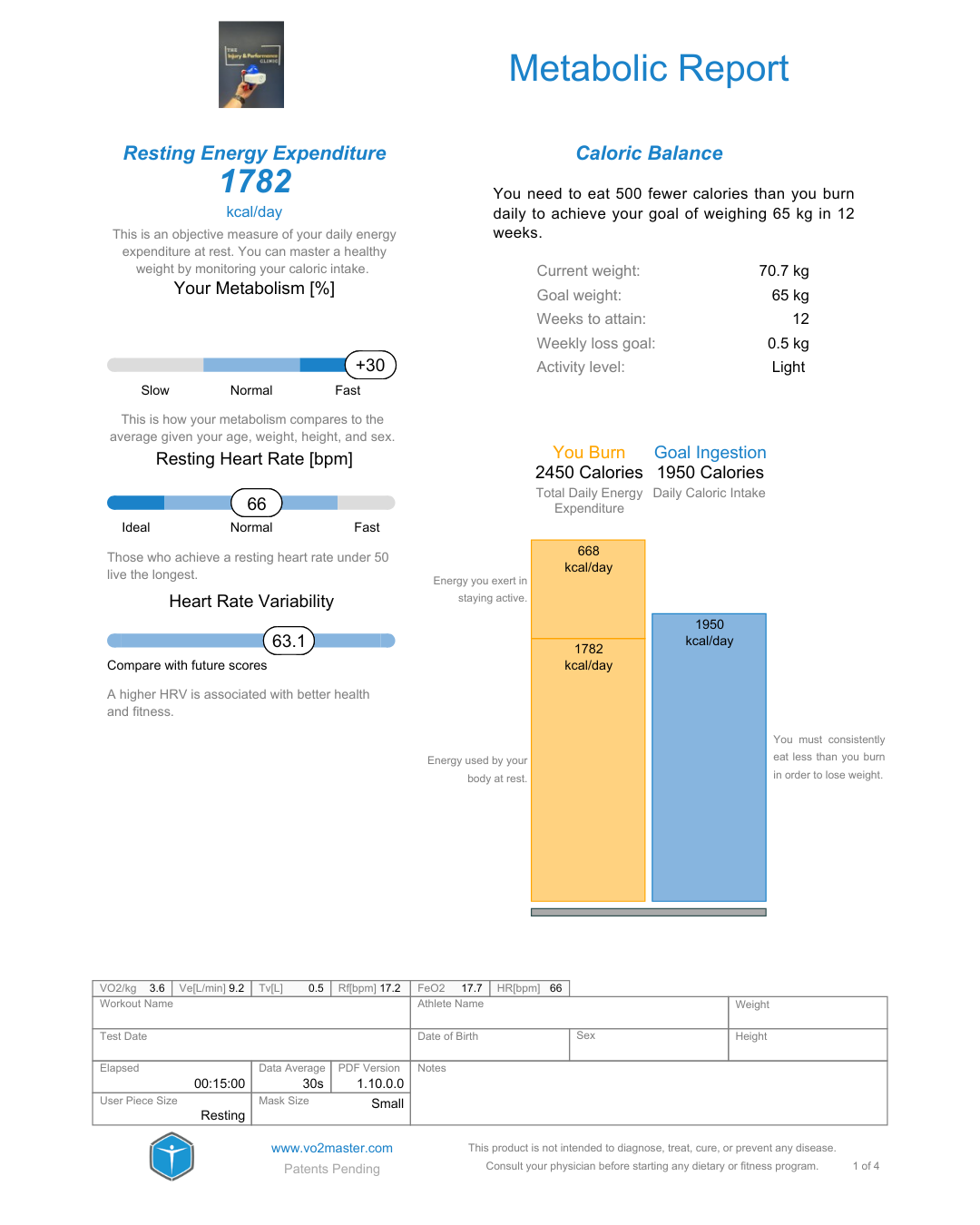RMR Testing Cheshire: Preparation & Procedure
At The Injury & Performance Clinic, we use Resting Metabolic Rate (RMR) testing with the VO₂ Master to give athletes and clients a precise baseline for fuelling, recovery, and performance. Unlike equations or wearables, this test directly measures how much energy your body burns at rest by analysing oxygen consumption and carbon dioxide output — a process known as indirect calorimetry.
To ensure accuracy and consistency, our testing follows a strict preparation and protocol. Here’s exactly what to expect:
1. Pre-Test Preparation — Setting the Foundation for Accuracy
Reliable results depend on entering the test in a true resting state. To achieve this, we ask all clients to follow these evidence-based guidelines:
Fasting (8 hours):
Food digestion elevates metabolism for several hours (known as the thermic effect of food). Fasting ensures we measure your baseline rather than the after-effects of a meal.Avoid Stimulants (caffeine, nicotine, pre-workouts):
These substances can raise heart rate, ventilation, and energy expenditure, artificially inflating RMR.No Intense Exercise for 24 Hours:
Hard training temporarily elevates metabolism (excess post-exercise oxygen consumption, or EPOC). Even one tough session the day before can skew results.Minimise Stress & Movement:
Mental stress activates the sympathetic nervous system, increasing heart rate and VO₂. Arrive calm, and once set up, remain still and relaxed for best accuracy.Dress Comfortably & Bring Essentials:
Loose clothing is best. After the test, we recommend bringing water and a snack to refuel.
2. The Testing Procedure — Step by Step
Once preparation is complete, here’s what happens during your VO₂ Master–powered RMR test:
1. Check-In & Profile Setup
We record key details — height, weight, age, and performance goals — into the VO₂ Master app.
2. Monitor Setup
A heart rate strap (e.g. Polar H10) is fitted, and the VO₂ Master mask is secured for airtight gas capture.
3. Calibration
The device undergoes a flow calibration (using a precision syringe, ~20 one-second pumps) to ensure airflow and gas exchange are measured with accuracy.
4. Resting Phase
The client sits comfortably in a chair or reclines. The test runs for around 10 minutes, during which the device continuously measures VO₂ and ventilation. Remaining quiet and still is essential — any fidgeting or talking increases metabolic demand.
5. Report Generation & Review
Immediately after, the VO₂ Master app produces a detailed RMR report. This typically includes:
Resting Metabolic Rate (kcal/day)
Respiratory Exchange Ratio (RER) — showing fat vs carbohydrate use at rest
Resting Heart Rate (RHR)
Heart Rate Variability (HRV)
We review the results with you in detail and email the report for reference.
Why This Precision Matters
Accurate Baseline:
Estimation formulas can be off by 10–20%. A clean, controlled RMR test gives your true energy needs — essential for nutrition planning.Consistency Over Time:
By standardising preparation and procedure, follow-up tests become meaningful comparisons, allowing you to track changes in metabolism with training, recovery, or body composition shifts.Holistic Insight:
By integrating RMR with RHR and HRV, we provide a complete view of metabolic health, recovery status, and readiness to train.
In Summary
RMR testing with VO₂ Master is a quick, non-invasive way to gain scientific clarity on your body’s energy demands. Done under controlled conditions, it provides accurate insights that guide nutrition, optimise recovery, and support sustainable performance improvements.
At The Injury & Performance Clinic, this isn’t just about numbers — it’s about giving you a data-driven roadmap for fuelling, training, and thriving.


